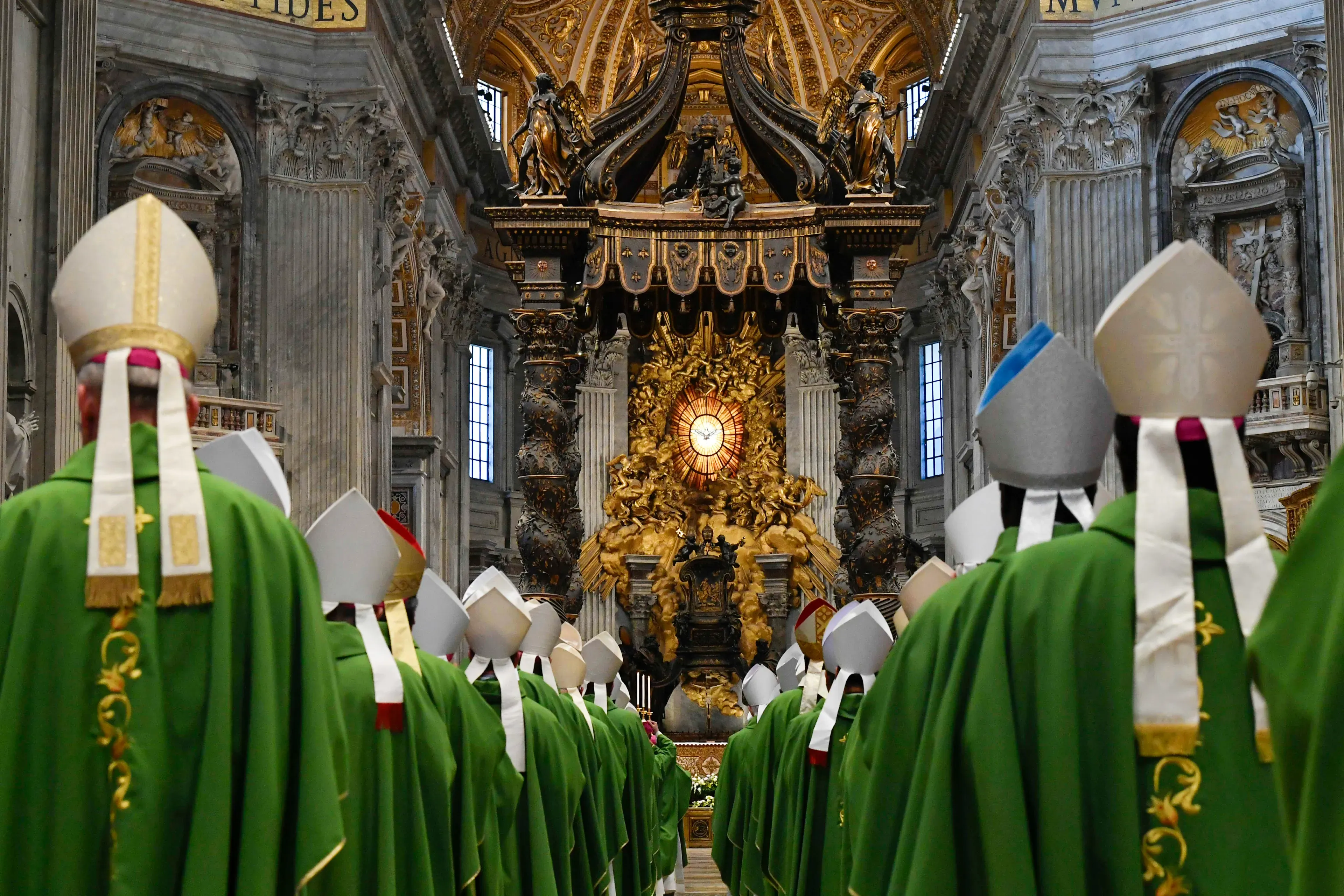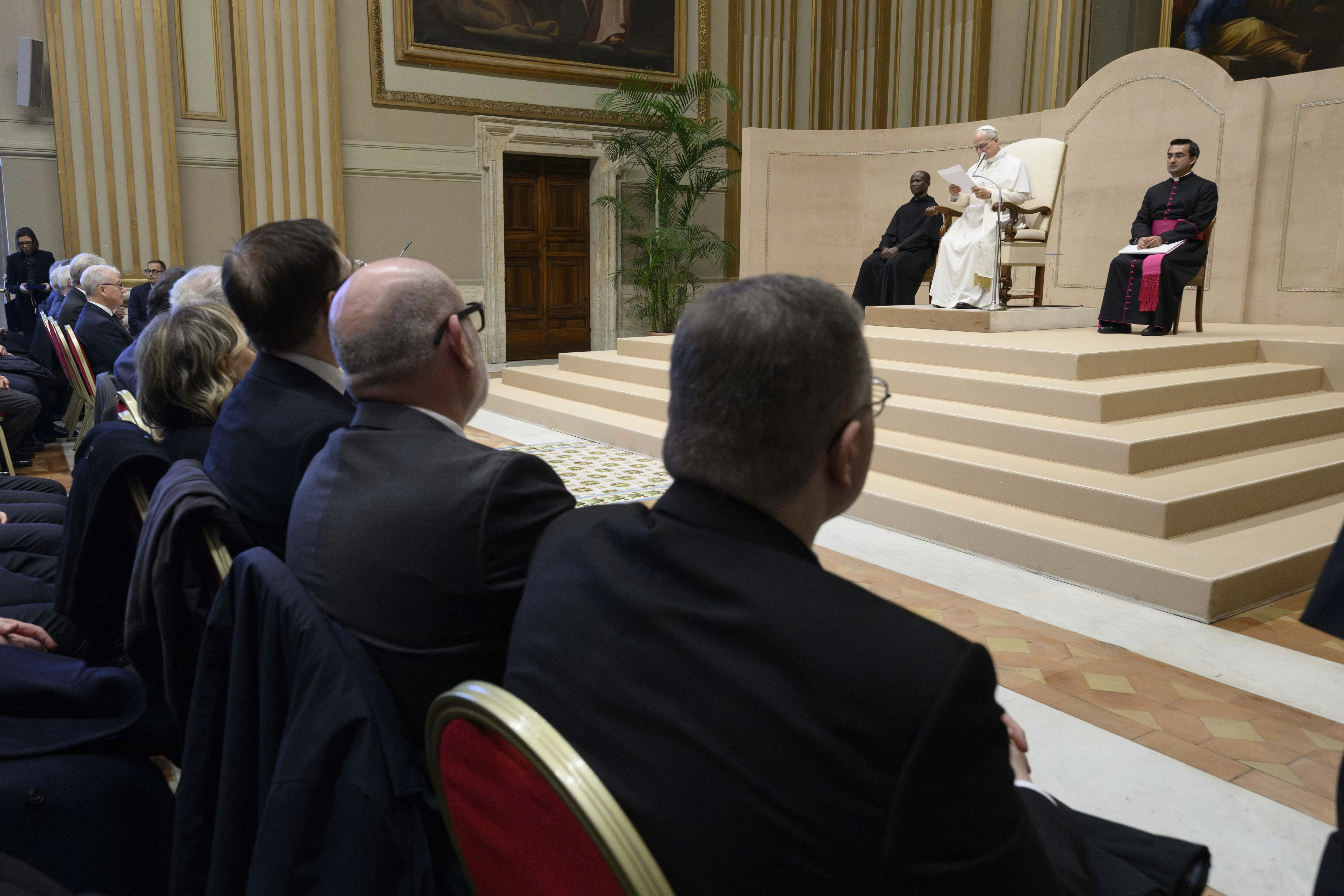ecumenical dialogue The relationship between the Catholic Church and other Christian churches in pursuit of full, visible unity.
facilitator A new role introduced in the Synod on Synodality. Facilitators are experienced individuals tasked with aiding the work in various moments of the assembly.
fraternal delegates Representatives from other Christian churches and ecclesial communities invited to participate in the synod as observers.
general congregation The assembly where all delegates, including the pope, participate in discussions.
Instrumentum Laboris Latin for “working document.” It serves as the basis for discussions during the synod. For the 2024 session, the second Instrumentum Laboris was published on July 9, 2024, and is 32 pages long. It clarified the Holy Father’s expressed desire for the deliberations of the synod to be more focused on concrete proposals for synodality rather than controversial topics.
(Story continues below)
living tradition The set of revealed truths — apostolic tradition — regarding faith and morals that are not contained in sacred Scripture but are transmitted faithfully and continuously from one generation to the next under the living teaching authority of the Catholic Church.
missio ad gentes The mission of the Catholic Church to bring the Gospel to those who do not know Christ or have abandoned the faith.
parrhesia A Greek term denoting courage or boldness, specifically the fearlessness that comes from the Holy Spirit. It was embodied in the hearts of the apostles at Pentecost and the courage it took among the early Christians to go out and proclaim the Gospel across the ancient world.
penitential rite A newly introduced element in the 2024 synod, where participants engage in a collective act of repentance and seeking forgiveness. This practice underscores the Church’s commitment to transparency and accountability and includes several notable innovations including the idea of “sins against synodality.”
people of God A key ecclesiological concept highlighted in the synod, emphasizing the community of all baptized faithful. The term came into particular use after Chapter 2 of the Dogmatic Constitution on the Church (Lumen Gentium) of the Second Vatican Council and claims roots in both scriptural and patristic images of the Church.
role of the Holy Spirit Pope Francis has repeatedly emphasized that the Holy Spirit is the true “protagonist” of the synod. This term has become one of the most frequently used during public interventions by participants.
sensus fidei Also called the “sensus fidelium” (“sense of the faithful”), the supernatural instinct of the faithful to recognize and endorse authentic Christian doctrine and practice. It is described in the Catechism of the Catholic Church (No. 92) as “the supernatural appreciation of faith on the part of the whole people, when, from the bishops to the last of the faithful, they manifest a universal consent in matters of faith and morals.”
structural changes Proposed alterations to decision-making processes within the Church aimed at widening participation of the laity while respecting episcopal authority.
study groups Ten groups were established to delve deeper into specific themes emerging from the synod’s first session. The most controversial topics raised at the first session — including authority, the possibility of women deacons, and the Church’s outreach to the LGBTQ community — were committed to the study groups to allow the synod participants to focus on ways for the Church to be truly synodal.
synodality A term emphasized in Pope Francis’ pontificate, generally understood to represent a process of discernment, with the aid of the Holy Spirit, involving bishops, priests, religious, and lay Catholics, each according to the gifts and charisms of their vocation.
synthesis report The document summarizing the discussions at the end of a synod phase. The document will be presented to Pope Francis and traditionally serves as the foundation for his own document, a postsynodal apostolic exhortation.
transparency The quality of being clear, open, and accountable in processes and decision-making.
women’s participation A notable feature of the 2023 and 2024 synod sessions is the participation of women with voting rights. In 2024, 54 women will again have the right to vote in the synod.
youth In Vatican terms, a “youth” is defined as a person between the ages of 16 and 35. This age range extends beyond what is typically considered a “youth” in many countries, particularly the United States.
Given the Synod on Synodality is an ongoing process, interpretations or applications of these terms may evolve as the Church continues its synodal journey.
Courtney Mares is a Rome Correspondent for Catholic News Agency. A graduate of Harvard University, she has reported from news bureaus on three continents and was awarded the Gardner Fellowship for her work with North Korean refugees.








